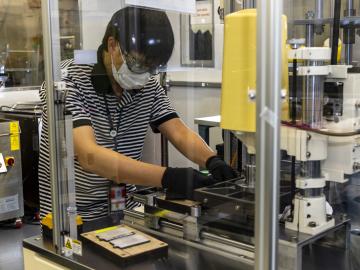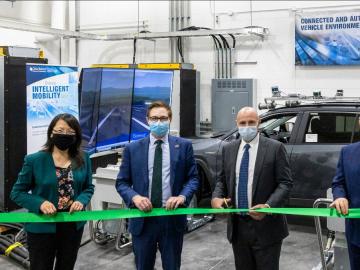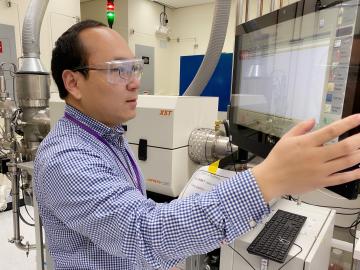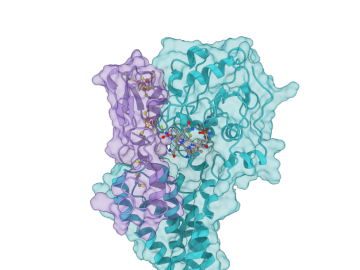
Filter News
Area of Research
News Type
News Topics
- (-) Advanced Reactors (8)
- (-) Big Data (8)
- (-) Biomedical (16)
- (-) Composites (1)
- (-) Coronavirus (22)
- (-) Environment (21)
- (-) Exascale Computing (3)
- (-) Materials Science (29)
- 3-D Printing/Advanced Manufacturing (26)
- Artificial Intelligence (7)
- Bioenergy (13)
- Biology (3)
- Biotechnology (2)
- Buildings (1)
- Chemical Sciences (5)
- Clean Water (2)
- Computer Science (32)
- Critical Materials (2)
- Cybersecurity (4)
- Energy Storage (14)
- Fusion (10)
- Grid (4)
- High-Performance Computing (3)
- Isotopes (7)
- Machine Learning (5)
- Materials (2)
- Mathematics (2)
- Mercury (1)
- Microscopy (6)
- Molten Salt (1)
- Nanotechnology (15)
- National Security (2)
- Neutron Science (31)
- Nuclear Energy (25)
- Physics (13)
- Polymers (5)
- Quantum Science (14)
- Security (3)
- Space Exploration (2)
- Summit (14)
- Transportation (11)
Media Contacts

Led by ORNL and the University of Tennessee, Knoxville, a study of a solar-energy material with a bright future revealed a way to slow phonons, the waves that transport heat.

Soteria Battery Innovation Group has exclusively licensed and optioned a technology developed by Oak Ridge National Laboratory designed to eliminate thermal runaway in lithium ion batteries due to mechanical damage.

Four research teams from the Department of Energy’s Oak Ridge National Laboratory and their technologies have received 2020 R&D 100 Awards.

ORNL and Department of Energy officials dedicated the launch of two clean energy research initiatives that focus on the recycling and recovery of advanced manufacturing materials and on connected and

About 60 years ago, scientists discovered that a certain rare earth metal-hydrogen mixture, yttrium, could be the ideal moderator to go inside small, gas-cooled nuclear reactors.

Experts at the Department of Energy’s Oak Ridge National Laboratory are now offering short-term technical and scientific assistance to entities working to combat the coronavirus through the COVID-19 Technical Assistance Program, an initiative of DOE’s Office of Technology Transitions.

Systems biologist Paul Abraham uses his fascination with proteins, the molecular machines of nature, to explore new ways to engineer more productive ecosystems and hardier bioenergy crops.

A team led by Oak Ridge National Laboratory developed a novel, integrated approach to track energy-transporting ions within an ultra-thin material, which could unlock its energy storage potential leading toward faster charging, longer-lasting devices.

A team led by ORNL created a computational model of the proteins responsible for the transformation of mercury to toxic methylmercury, marking a step forward in understanding how the reaction occurs and how mercury cycles through the environment.

As CASL ends and transitions to VERA Users Group, ORNL looks at the history of the program and its impact on the nuclear industry.


